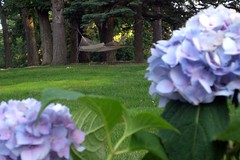 Cashmere sweaters are welcome attire on any cold wintry Chicagoland day. While wearing wool can create an itching dilemma for some, cashmere defies itching. According to the Cashmere Producers of America, cashmere is known as the non-irritating, warm and lightweight fabric of choice for those who can afford to purchase it. "Warmth without weight and incredible softness suited for a baby's skin is what cashmere is all about," according to CAPCA. Cashmere is luxurious, warming the body in such a way as to remind one that life is good. Cashmere has yearned to live in my closet, next to it's merino cousins, and in the most recent two years cashmere has succeeded. While in the past wool has been tolerated only when other clothing forms a barrier between it and the skin, a pink cashmere v-neck sweater warms me as I write this. Of course it's pink because I am a pink girl, as previously discussed here.
Cashmere sweaters are welcome attire on any cold wintry Chicagoland day. While wearing wool can create an itching dilemma for some, cashmere defies itching. According to the Cashmere Producers of America, cashmere is known as the non-irritating, warm and lightweight fabric of choice for those who can afford to purchase it. "Warmth without weight and incredible softness suited for a baby's skin is what cashmere is all about," according to CAPCA. Cashmere is luxurious, warming the body in such a way as to remind one that life is good. Cashmere has yearned to live in my closet, next to it's merino cousins, and in the most recent two years cashmere has succeeded. While in the past wool has been tolerated only when other clothing forms a barrier between it and the skin, a pink cashmere v-neck sweater warms me as I write this. Of course it's pink because I am a pink girl, as previously discussed here.The softness and non-irritability of cashmere is called the "prickly factor;" the softer the cashmere, the lower the prickly factor. Cashmere is harvested from a specific breed of goats, the cashmere goat. The quality of the cashmere produced is determined by the environment in which the goat lives. Lucky goats who are fortunate to reside in a five star farm, similar to The Four Seasons Hotel, apparently will produce softer, thicker higher quality cashmere than goats who have the misfortune of spending their days at a 1 or 2 star farm. This makes perfect sense; the more stars awarded to a hotel, the higher quality sheets, duvets and room rates. Likewise with goats, the better the goats' environment, the better the fine undercoat the goat produces, the better the cashmere, and bling, the higher the price.
Cashmere softness is defined by style, in this case fiber style refers to the natural crimp of each individual fiber; the more frequent the crimps, the finer the spun yarn and the softer the finished product. The presence of a tight crimp creates a thin, soft and tight thread that is the hallmark of fine cashmere. Finer fiber has better crimp, which allows it to be spun into a very fine two-ply yarn that is lightweight but lofty, meaning tiny air spaces are trapped between the individual fibers. The loft, complete with air spaces, retains the body's heat and the loft makes cashmere different from wool, mohair and man-made fibers.
Everyone should purchase all things cashmere as a personal contribution to the Cashmere Producers of America's retirement fund. Pink cashmere socks from Mark Shale warm my toes and cashmere scarves are donned prior to dashing through the snow. Spun into bathrobes, nightgowns and coats, cashmere is the softest wool available and a black tightly crimped cashmere v-neck sweater is now front and center on my Christmas Wish List. Are you listening?
Photo attribution: By Puccabp



No comments:
Post a Comment